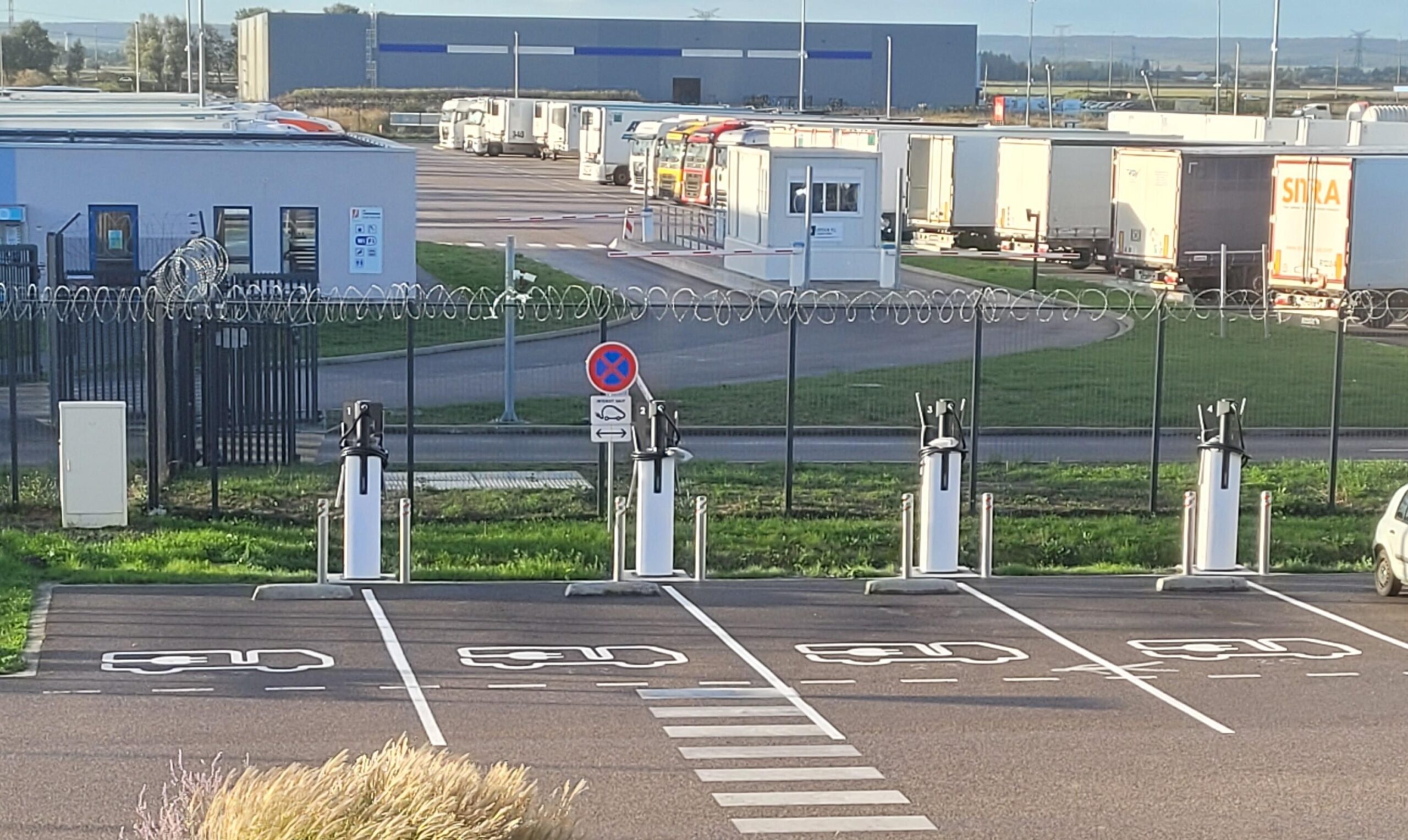With the UK government tightening carbon regulations and mandating the transition to zero-emission heavy-duty vehicles, designing a reliable, efficient EV charging station has become a strategic priority for fleet managers. A structured, scalable approach is key to building charging infrastructure that meets both today’s needs and tomorrow’s demands.
1. Planning the right infrastructure from day one
The first step is understanding your fleet’s charging requirements, now and in the future. This means more than just installing enough plugs. It requires a comprehensive assessment that includes:
- Vehicle specifications (battery capacity, charging speed) ;
- Daily mileage and duty cycles ;
- Site constraints (space, electrical capacity, access) ;
- Growth forecasts and route expansion ;
- Grid availability and upgrade timelines.
An intelligent station design balances charging power, the number of charging points, and energy capacity. Build too small and you’ll bottleneck operations. Overbuild and you risk unnecessary costs. The key is modularity, a station that evolves as your fleet scales. Incorporating flexibility from the outset helps reduce long-term civil and electrical engineering costs and ensures long-term return on investment.
2. Streamlined deployment and project management
Installing a heavy-duty EV charging station isn’t plug-and-play. It’s a multi-phase project requiring seamless coordination across planning, permitting, construction, and commissioning.
Look for a partner who offers:
- End-to-end project ownership: from securing permissions to electrical works and DNO connections.
Experienced commissioning: ensuring the station is safe, fully operational and optimised from day one.
Deadline accountability: keeping deployment on schedule to match your fleet rollout.
3. Smart charging and system reliability
A modern depot charging solution must go beyond hardware. The right technology backbone ensures maximum uptime, cost control and ease of use.
Your infrastructure should include:
- DC and AC charging tailored to your fleet’s mix of vehicles
- OCPP-compliant software (1.6 or 2.0) for real-time charge scheduling, power management and energy tracking
- A centralised platform for monitoring, diagnostics and remote troubleshooting
This level of integration enables load balancing, avoids unnecessary peak charges, and helps operators run their depot more efficiently.
4. Dependable operation and proactive maintenance
High uptime is non-negotiable for logistics operators. Choose a provider who can guarantee >99% availability, backed by a dedicated support and maintenance plan.
Key elements include:
- Rapid-response maintenance teams with local presence
- Predictive diagnostics to catch issues before they escalate
- Spare parts availability and proactive support contracts
Reliable infrastructure isn’t just about technology, it’s also about service.
5. Built for growth: flexible, scalable by design
As the electrification of HGVs accelerates, your depot must be able to adapt. Your charging setup should allow:
- Easy expansion without reworking the entire sit
- Compatibility with multiple vehicle brands and form factors
- Reconfiguration options as route planning and charging strategies evolve
This flexibility ensures that your investment grows with your fleet.
6. Funding, incentives and financial models
Transitioning to electric doesn’t have to mean a major upfront spend. There are UK-specific grants and financial mechanisms that make depot electrification more accessible, including:
- Government-backed grants and schemes like the EV Infrastructure Grant for Fleets
- Private or public co-investment opportunities (especially for logistics depots on shared sites)
- Third-party financing models, including leasing or “charging-as-a-service” contracts
A strong partner will guide you through applications, identify available funding, and offer tailored financing solutions that match your business model.
7. Integrating renewable energy
To make your depot truly future-ready, consider integrating solar PV and on-site energy storage. With the right design, your depot can:
- Generate part of its energy from renewables
- Cut electricity costs by reducing grid dependency
- Lower your carbon footprint and boost ESG credentials
This turns your site into an energy hub, supporting long-term sustainability goals while offering cost advantages.
Designing a heavy-duty EV charging station isn’t just a technical challenge, it’s a strategic opportunity. By choosing the right partner and prioritising scalability, reliability, and intelligent management, UK fleet operators can confidently electrify their operations while staying ahead of regulatory and market shifts.



